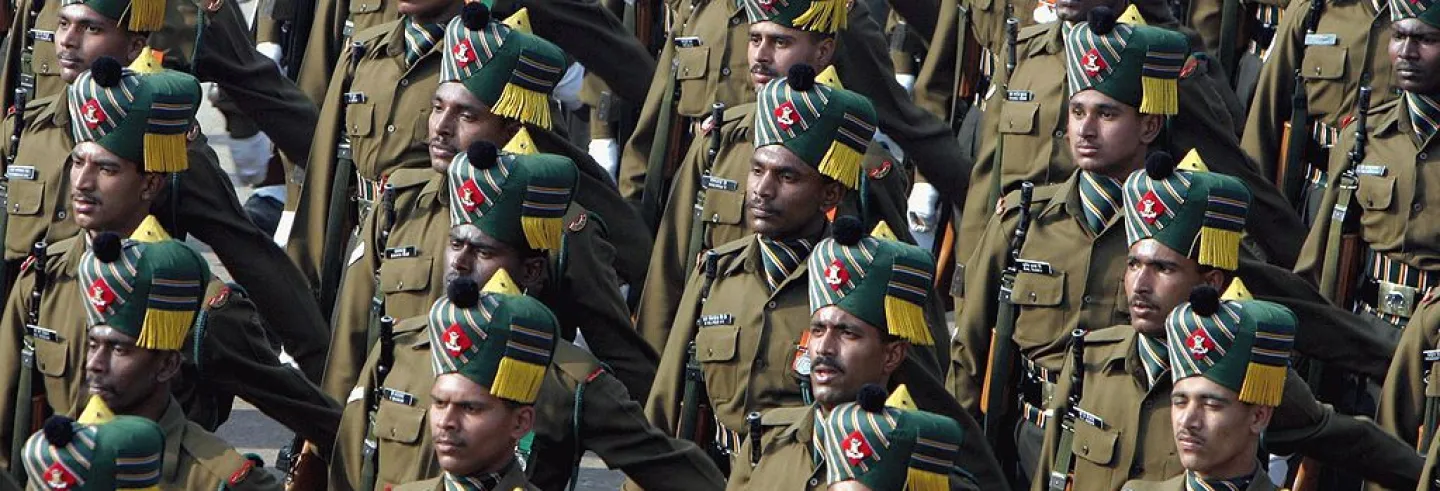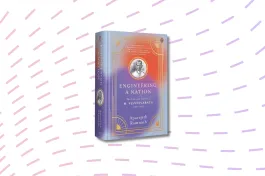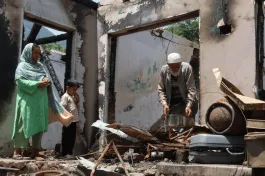On New Year’s Day 2020, the Government announced the appointment of a Chief of Defence Staff. As India’s first CDS, General Bipin Rawat, will perform multiple and overlapping functions. He will act as the principal military advisor to the defence minister, though the service chiefs will continue to advise the minister on their respective services.
The CDS is envisaged as the first among equals. To enable the CDS perform this function, the Government has also created a Department of Military Affairs within the Ministry of Defence that will deal with issues relating expressly to military matters—including jointness, integration, prioritizing for budgets—leaving wider defence policy—including capital acquisition—to other parts of the ministry. The CDS will also hold the post of permanent Chairman of the Joint Chiefs of Staff Committee, in which capacity he will oversee tri-service organizations and be part of the chain of nuclear command.
The recent moves accord the military a prominent seat at the high table of decision-making.
These moves have been hailed as major reforms—possibly the “most significant development in the national security domain since Independence.” This is may well be true in institutional terms, though the jury will naturally be out for a while on what these changes actually accomplish. The idea of a CDS (or some variant) has been mooted for decades, including by the Group of Ministers in 2001 as well as successive committees. The Government has not only established this office, but has ushered in related changes. The Department of Military Affairs does away with the peculiar arrangement whereby the service headquarters were kept at arm’s length from the Government as “attached offices” of the ministry. The military had long maintained that this arrangement enabled bureaucratic dominance of—not to say monopoly over—defence policymaking. The recent moves accord the military a prominent seat at the high table of decision-making. Similarly, the CDS appears well positioned to deliver on longstanding, if also contentious, goals of integration—including the creation of integrated theatre commands.
As we ponder the tasks and challenges that lie ahead in defence and national security, it may be useful to take a longer historical view of the evolution of civil-military relations in India. The institutional pattern and its infirmities that we now look to transcend were not cast in stone at the time of Independence. Rather, they evolved over a period of time. Further, even its more problematic aspects—such as the desire to limit the military’s role in policy-making structures—evolved against broader concerns about its implications for democratic politics and not merely owing to unfounded fears of a military coup. Reviewing these older debates and developments might help us check the impulse to assume that everything that happened in the institutional domain of national security was either wrong or wrong-headed.
Military in the British Raj
The received wisdom has it that the tradition of political control over the military was bequeathed to independent India by the British. On the contrary, the British empire in India was in its origins a military autocracy and the military remained prominent in the British Raj throughout its existence. Even in peacetime about 40 per cent of the central government’s revenue was spent on the army in India. In 1900–01, for instance, the government spent nearly three times more on the army than it did on irrigation, famine relief and education.
This was not merely because of the deployment of the Indian army for imperial wars or the payment of “home charges” as held by theorists of the “drain of wealth” from India. Rather it was because of the institutional heft of the military and the consequent ability of the Commander-in-Chief of India to lay claim to a large chunk of the government’s budget on grounds of military necessity. Following the spat between Viceroy Lord Curzon and Commander-in-Chief General Kitchener, which led to Curzon’s resignation in 1905, the institutional balance of power tilted further in favour of the Commander-in-Chief. The latter was not only the commander of all military forces in India, but also became the Military Member of the Viceroy’s Executive Council—a post that was hitherto kept separate. In effect, the Commander-in-Chief was also the defence minister of the government. This gave the military an outsized position within the government—hardly a model of political control of the military.
[I]n its final years, during and after the Second World War, the Raj returned to its origins as a military autocracy with the promulgation of Defence of India rules and the appointment of military officers as governors general.
The emerging Indian nationalists were quick to grasp these issues. In his speech on the budget of 1903, Gopal Krishna Gokhale argued that “Indian finance is virtually at the mercy of military considerations”. Military security, he conceded, was undoubtedly a “paramount consideration”, but military preparedness had “no definite standard and might absorb whatever resources can be made available for it practically without limit”. The military’s own assessment of its requirements was being accorded excessive weight in the government’s consideration of the matter. In 1907, Gokhale argued against privileging the narrow standpoint of the soldier: “whose principal idea is to raise the efficiency of the Army to as high a state of perfection as possible, and who wants to take for this purpose all the money he can get.” 1 W. R. Mujawar ed., Speeches and Writings of Gopal Krishna Gokhale, vol. 1 (Delhi: Mangalam Publications, 2009), pp. 41-42, pp. 144-45.
These issues came to the fore after the First World War. The “Army in India Committee”, led by Lord Esher, asserted the importance of imperial duties, rejected increased democratic control over the military, and proposed buttressing the Commander-in-Chief’s position. These recommendations drew sharp criticism in the newly-constituted legislative assembly. Indian members of the house tabled 15 resolutions as recommendations to the Viceroy, which covered the central structural problem of civil–military relations.
The absence of “a fully responsible government in India”, they argued, did not warrant a different form of civil–military relations from Britain. To realize the “principle of ultimate supremacy of the civil power”, it was imperative that the Commander-in-Chief ceased to be a member of the Executive Council. Instead, the portfolio of defence should be entrusted to a civilian member. The Commander-in-Chief should not be allowed to commit the Indian government to “any pecuniary responsibility or any line of military policy that has not already been the subject of decision by them.” 2 Resolutions on Esher Committee, CID 119-D, CAB 6/4, The National Archives, London.
Even before he held the levers of the state, Nehru realized the importance of keeping the military subordinate to the political authority.
The Motilal Nehru Report of August 1928 built on these points. The report asked for “the representation of the army in the legislature by a responsible minister [as opposed to the Commander-in-Chief], who will, in actual administration, no doubt be guided by expert advice”. For considering questions of defence policy, the governor general should appoint a “Committee of Defence” consisting of the prime minister (who would chair the committee), the defence and foreign affairs ministers, the Commander-in-Chief and other service chiefs, and two other experts.
Nearly two decades would pass before this change occurred. Indeed in its final years, during and after the Second World War, the Raj returned to its origins as a military autocracy with the promulgation of Defence of India rules and the appointment of military officers as governors general. It was only when the interim government was formed in September 1946, that a civilian, Sardar Baldev Singh, was appointed the military member of the Executive Council. At the time of Independence, the chiefs of air force and navy were designated Commander-in-Chief, thereby reducing the primacy accorded to the army. Still later, in 1955, the title of Commander-in-Chief was abolished altogether and the heads of the defence services were designated chiefs of staff.
Independence and After
In establishing the norm of civilian supremacy in the new republic, Jawaharlal Nehru played a key role. Even before he held the levers of the State, Nehru realized the importance of keeping the military subordinate to the political authority. On the eve of Independence, the army’s Commander-in-Chief had issued orders to keep the public away from the flag hoisting ceremony. Rescinding this order, Nehru wrote to General Rob Lockhart: “In any policy that is to be pursued in the Army or otherwise, the views of the Government of India and the policy they lay down must prevail. If any person is unable to lay down that policy he has no place in the Indian Army.” 3 Cited in Ramachandra Guha, India After Gandhi: The History of the World’s Largest Democracy (London: Picador, 2007), p. 760. This set the tone for civil-military interaction in the years ahead.
The most controversial episode in civil-military relations during the Nehru years was the army chief, General K.S. Thimayya’s offer of resignation in September 1959. The traditional account holds that Thimayya’s resignation was sparked off by a disagreement with Defence Minister V.K. Krishna Menon over the promotion of senior army officers. However, the reasons for the resignation ran deeper. Just a few weeks before the affair, Indian and Chinese forces had clashed along the eastern frontiers. To meet the threat from China, Thimayya wanted the political leadership to consider the proposal mooted by Pakistan’s President, General Ayub Khan, for joint defence arrangements between India and Pakistan.
[I]n Nehru’s own time the institutional balance of civil-military relations began to shift.
Nehru had already turned this down as antithetical to non-alignment. Menon, too, was opposed to the idea. Thimayya took things up directly with the Prime Minister. When matters did not progress, Thimayya sent his resignation to Nehru. The Prime Minister naturally saw this as an attempt to force his hand on policy matters. Nehru managed to persuade Thimayya to withdraw his resignation. When questioned in Parliament, Nehru played down the episode as arising out of temperamental differences. Yet Nehru’s concerns were evident when he emphasized the point that “civil authority is and must remain supreme”. 4 Srinath Raghavan, War and Peace in Modern India: A Strategic History of the Nehru Years (Ranikhet: Permanent Black, 2010), pp. 266-70. Also see, Jairam Ramesh, A Chequered Brilliance: The Many Lives of V.K. Krishna Menon pp. 502-6.
Yet in Nehru’s own time the institutional balance of civil-military relations began to shift. The origins of this change can be traced to the defeat against China in the winter of 1962. After the war, the political leadership came under sustained attack for having interfered in military matters, which was held to have led to the debacle. This interpretation was flawed. The military went along with the strategy (“forward policy”) proposed by civilians not because the latter rode roughshod over them, but because the professional military had no viable alternatives to offer. Besides, many of the key decisions in the run-up to the war were actually taken on the advice of the top military leadership. This is not to claim that the politicians bore no blame for the defeat—the buck stopped with Nehru—but that the claim about civilian interference as the cause of defeat was wrong. 5 Srinath Raghavan, “Civil-Military Relations in India: The China Crisis and After”, Journal of Strategic Studies, volume 32, no. 1 (February 2009), pp. 149-175.
[T]he then Defence Secretary later noted, “In the view of the public outcry since the 1962 debacle about the relative role of politicians and the Services and their chiefs”, the military leadership had been given “a long rope."
This narrative soon became an article of faith with the military. The principal lesson drawn from it was the importance of “standing up” to politicians who sought to intrude in professional matters. More importantly, the civilians—unnerved by the war—tacitly accepted this critique. Thereafter, they restricted themselves to giving overall directives, leaving operational issues to the military.
As the then Defence Secretary later noted, “In the view of the public outcry since the 1962 debacle about the relative role of politicians and the Services and their chiefs”, the military leadership had been given “a long rope.” 6 P.V.R. Rao to Additional Secretary Ministry of Defence, 18 May 1973; ‘Note on Incident’ by P.V.R. Rao, 5 September 1965 in Y.D. Gundevia Papers, Subject File 7, Nehru Memorial Museum and Library. Within a decade this became the new norm in civil-military relations. Writing in the mid-1970s, a senior Ministry of Defence official observed, “while the operational directive is laid down by the political leadership, the actual planning of operations is left to the chiefs of staff, and, over the years, a convention has been established that in purely operational matters such advice of the chiefs is almost automatically accepted.” 7 P. R. Chari, “Civil-Military Relations in India”, Armed forces and Society, volume 14, no. 1 (November 1977), p. 13.
The military’s operational autonomy—including crucially the autonomy to define what was “operational”—emerged in parallel with the bureaucracy’s dominance over other aspects of defence policy. The Study Team on Defence Matters set up by the first Administrative Reforms Commission of 1966 noted that there was some misapprehension that civilian control amounted to “civil service control”. 8 Cited in A.G. Noorani, “The Doctrine of Civilian Control” in A.G. Noorani, Constitutional Questions and Citizens’ Rights (New Delhi: Oxford University Press, 2005), p. 392. In fact, the military’s resentment of the bureaucracy went back a long way. As early as 1951, the first defence secretary of independent India, H.M. Patel, observed that the military leadership deeply disliked the role of civilian bureaucrats in policy and administrative matters alike. 9 H.M. Patel to General Roy Bucher, 23 February 1951, Roy Bucher Papers, 7901/87-33, National Army Museum, London.
In his important, new book on Indian civil-military relations, scholar Anit Mukherjee aptly terms the peculiar institutional set-up that emerged after the China war the “absent dialogue”. He defines this as comprising: “(1) lack of civilian expertise in military issues at both the bureaucratic and political levels, (2) an institutional design wherein the military is under strong bureaucratic control, and (3) considerable military autonomy over activities that it considers to be within its own domain.” 10 Anit Mukherjee, The Absent Dialogue: Politicians, Bureaucrats, and the Military in India (New Delhi: Oxford University Press, 2020), p. 5. As Mukherjee persuasively argues, this has had deleterious consequences for national security.
Challenges Ahead
Over the years, the Indian “strategic community” has come to regard the integration of the military into policy-making structures as the silver bullet for institutional problems in national security. There is much to be said for this view. But it always obscured the fact that the problem was as much politicians and bureaucrats steering clear of the military turf and refraining from a probing engagement with military matters, especially those falling within the baggy domain of the “operational”. The changes now ushered in will hardly solve this crucial problem. If anything, political leaders will now be more susceptible to military advice without any corresponding increase in their ability to interrogate them or benefit from alternative and informed views on these issues.
Unless there is a thorough overhaul of professional military education, the military will be unable meaningfully to work the new structures that are taking shape.
Equally important, is the military’s ability to operate in the new domain of policy-making. It is no exaggeration to say that the military is deeply deficient on this count. This is not only because the military was kept out of this space, but because the armed forces’ conception of professional military education has been narrow, unimaginative and crimped. None of our military educational institutions offers any serious training in international relations or economics, history or public policy. They continue to prepare officers primarily for operational and logistical roles, and have no conception of serious academic training. Unless there is a thorough overhaul of professional military education, the military will be unable meaningfully to work the new structures that are taking shape. Just as we looked to other countries to make the case for integrated structures of policy-making, we must learn from their willingness to put their officers through serious education and prepare them for serving as policy-makers as well as soldiers.
Finally, it is important that the military and its leadership are cognizant of dangers that lurk as they embark on this new institutional journey. In his seminal work on civil-military relations, the late Samuel Huntington differentiated between subjective civilian control over the military and objective control. The latter he defined as marked by an inviolable military sphere of action whose counterpart was the military’s evacuation of the sphere of politics. Subjective control, by contrast, operated on an ideological affinity between military and political leaders. In the past, we have had a system that approximated objective control. And, as we move ahead, it is imperative not to slip into any variant of subjective control.
The conduct of certain senior military officers has also shown a propensity to go beyond the thin line dividing military matters and politics...
The new army chief, General M.M. Naravane, has rightly reminded us that the armed forces owe their allegiance to the values embodied in the Constitution. The BJP Government, however, has sought to mobilize the military community (including retirees) under the sign of a muscular nationalism: think of its campaign 2013-14 campaign for one-rank one-pension; the induction as cabinet minister of controversial former army chief, General V.K. Singh; the “celebrations” on the 50th anniversary of the 1965 war; the national war memorial; the milking of “surgical strikes” and the airstrikes on Pakistan for electoral purposes.
The conduct of certain senior military officers has also shown a propensity to go beyond the thin line dividing military matters and politics: think of former Army Chief and now CDS General Rawat’s comments about a planned influx from Bangladesh that was aimed at changing Assam’s political profile, his invocation of security challenges on the eve of state elections, or his recent wading into controversy over student protests against the Citizenship Amendment Act and the National Register of Citizens. General Naravane himself seemed unsure of this line when in his Army Day speech, he lauded the decision to rescind Article 370—a matter that lies before the Supreme Court.
The new CDS has his job cut out for him. But, in the months and years ahead, it will be up to our military brass to craft a course of action that enables the armed forces to contribute both well and wisely to national security.










